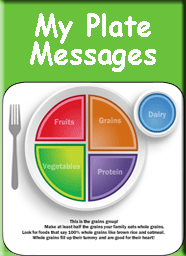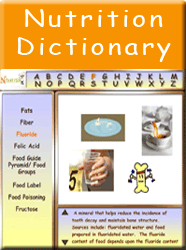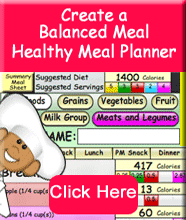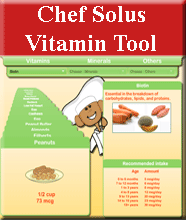Our tools are action oriented and designed to help you make sound decisions about the nutrition and exercise your child needs.
Here are some tools to help you determine what your child needs.
We will be creating new tools for you to try, so please keep checking back.

Learn more about the food
groups and a balanced meal.

learn what it means for your child.

See what foods your child needs!
Want to know what your child should be eating? Use this easy calculator to see what foods your child needs and how much!
You can also create a meal plan based on the recommendations or you can see how your child’s current eating habits measure against the recommended food plan.
Our calculator is based on the USDA 2005 food guidelines. Our goal is to help give you the information you need to guide your child to eat a balanced diet. By providing your child with the food they need from each of the food groups, your child will be getting all the vitamins and minerals necessary to help them grow and develop in a healthy way.
There are three ways that you can use the Child’s Healthy Meal Calculator:
-
You can find out what your child needs to have a balanced diet
-
You can create a personalized meal using the recommendations listed as your guide. The meal planner will guide you in determining what foods make up a serving and how much food does it take to meet the calorie needs of your child. You might be surprised at how those calories add up when providing foods from all the food groups. The body does not really need very much of the “Other Foods” (These are the foods that have very little nutritional value. They are mostly made of sugar and/or fat.)
-
You can compare your child’s current diet to the recommendations to see if your child is getting a balanced diet. One way to do this is to use the meal planner and create a meal plan that shows what your child is currently eating and then compare it to the recommendations.
Remember, a balanced diet means your child is getting all the vitamins and minerals their body needs.
Food labels are an important part of helping our families eat a healthy balanced diet. They provide the important information to help us choose healthier foods that have higher fiber, lower calories and less fat.
Learn more about the parts of the
food labels and how to use it when shopping for healthier foods.
Use food labels when you shop, plan your family meals, and cook.
We also have a child’s version so your child can learn about
food labels in a fun interactive game. See the Children's Food Label Game
What is BMI?
Body Mass Index (BMI) is a number calculated from a child’s weight and height. BMI is a reliable indicator of body fatness for most children and teens.
What is a BMI percentile?
You will notice a percentile ranking. This percentile ranking was calculated based on the BMI number and where it falls on the CDC BMI-for-age growth charts (for either girls or boys). Percentiles are the most commonly used indicator to assess the size and growth patterns of individual children in the United States. The percentile indicates the relative position of the child’s BMI number among children of the same sex and age. The growth charts show the weight status categories used with children and teens (underweight, healthy weight, at risk of overweight, and overweight).
BMI-for-age weight status categories and the corresponding percentiles are shown in the following table.
|
Weight Status Category |
Percentile Range |
|
Underweight |
Less than the 5% |
|
Healthy weight |
5% to less than the 84% |
|
At risk of overweight |
85% to 94% |
|
Overweight |
Equal to or greater than the 95% |
How is BMI used with children and teens?
BMI is used as a screening tool to identify possible weight problems for children. CDC and the American Academy of Pediatrics (AAP) recommend the use of BMI to screen for overweight in children beginning at 2 years old.
Learn more about the BMI Tool for Children.
 We are excited to share with you our new vitamins and minerals tool.
We are excited to share with you our new vitamins and minerals tool.